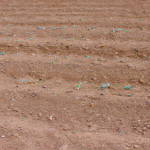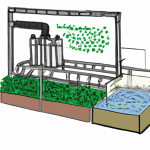Growing Nutrient-Dense Foods: A Path to Self-Reliance and Survival
A crisis or disaster can strike at any moment, and when it does, our food systems may be severely compromised. From natural disasters to economic collapse, there are numerous threats that could disrupt the availability of the food we rely on to survive. It may sound daunting, but preparing for such an eventuality is essential if we want to ensure our wellbeing and that of our loved ones.
One of the key ways to prepare for a crisis is to focus on growing and consuming nutrient-dense foods. These foods are packed with essential vitamins, minerals, and micronutrients that our bodies need to function optimally, especially during times of stress or limited resources. By growing our own nutrient-dense foods, we take responsibility for our own sustenance and reduce our dependence on fragile food supply chains.
Here are some steps to get started on your journey to growing nutrient-dense foods:
- Choose the right crops: Not all plants are created equal in terms of their nutritional content. Focus on growing crops that offer a high nutritional yield per square foot of garden space. Leafy greens such as spinach, kale, and Swiss chard are excellent choices, along with nutrient-dense vegetables like carrots, sweet potatoes, and broccoli.
- Build healthy soil: The foundation of any successful garden lies in the health of the soil. Invest time and effort into improving your soil’s quality by adding compost, organic matter, and natural fertilizers. Healthy soil leads to healthy plants, which in turn provide more nutrient-rich produce.
- Practice companion planting: Certain plants have natural affinities for one another and can benefit each other when grown together. For example, planting beans near corn can enhance nitrogen fixation and improve the overall health and productivity of both crops. Research companion planting techniques to maximize your yields and increase the nutrient density of your harvest.
- Implement organic pest control: Chemical pesticides have the potential to harm both the environment and our health. Instead, focus on natural and organic methods of pest control. This could include introducing beneficial insects, using companion plants to repel pests, and practicing crop rotation to minimize pest populations.
- Harvest and store with care: Once your nutrient-dense crops are ready for harvest, handle them with care to preserve their nutritional value. Harvest produce when it’s ripe but not overripe to ensure maximum nutrient content. Use proper storage techniques, such as canning, dehydrating, or freezing, to extend the shelf life of your harvest and reduce wastage.
Benefits of Growing Nutrient-Dense Foods:
- Health and well-being: In a crisis situation, our bodies need all the support they can get. Nutrient-dense foods provide the necessary vitamins, minerals, and antioxidants to boost our immune systems, promote healing, and help us cope with stress.
- Self-reliance: By growing our own nutrient-dense foods, we become less reliant on external food sources. This empowers us to take control of our own nutrition and reduces our vulnerability to supply chain disruptions.
- Cost savings: Growing your own food can be cost-effective, especially in the long run. By investing in seeds, tools, and soil improvement upfront, you’ll save money over time by reducing your grocery bills and bypassing rising food prices.
- Sustainability: By embracing self-reliance and growing nutrient-dense foods, we contribute to a more sustainable future. Industrial agriculture is often reliant on harmful practices that degrade the environment and deplete natural resources. By growing our own food, we can move towards a more environmentally friendly and regenerative system.
In conclusion, growing nutrient-dense foods is a crucial step towards self-reliance and survival in uncertain times. By taking control of our own food production, we ensure that our dietary needs are met even in the face of a crisis. Don’t wait until it’s too late; start building your nutrient-dense garden today!




GIPHY App Key not set. Please check settings